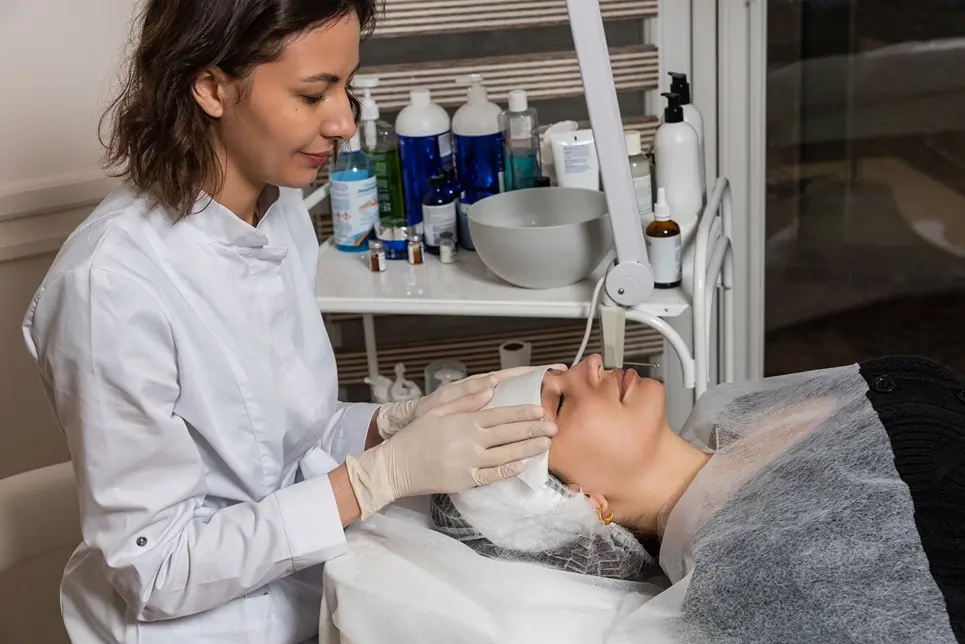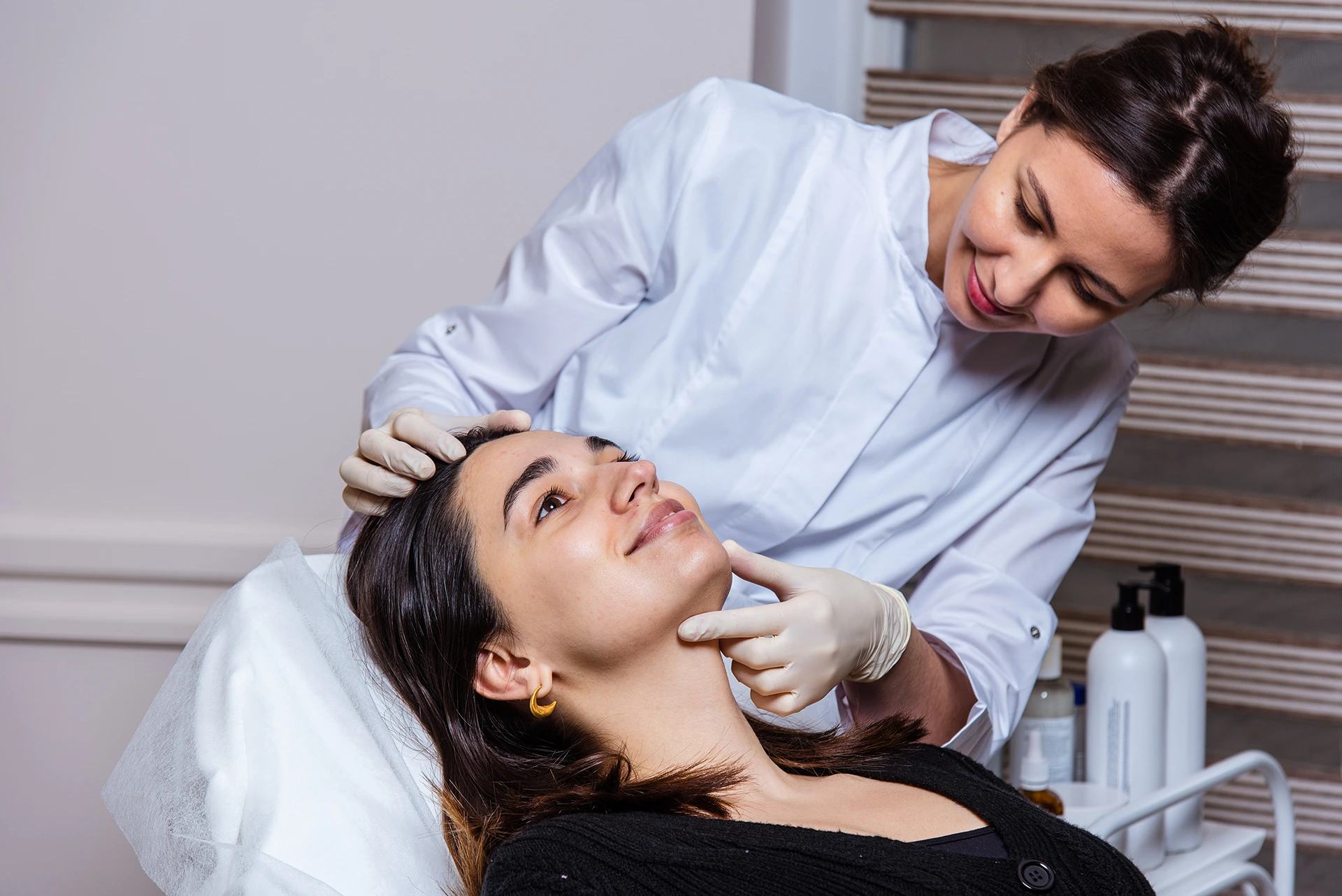The Key to Safer, More Effective Treatments and The Complexion Transformation You Desire
Are you curious about dermaplaning, the buzzy new skin treatment touted as a noninvasive alternative to surgery? Before booking your first appointment, it’s crucial to understand what makes a quality dermaplaning provider.
Dermaplaning utilizes a scalpel-like blade to gently scrape away dead skin cells and fine hairs, but without proper training that covers everything from analyzing diverse skin types to using the correct blade angle with just the right pressure, complications are possible.
When seeking a dermaplaning professional, look for indicators that they have undergone a rigorous certification program with extensive hands-on practice. This training should prepare them to evaluate your unique complexion, determine if dermaplaning is suitable given your medical history and skin concerns, and ensure a precise, safe procedure customized for your goals.
In this article, we’ll explore what factors indicate a provider has received high-caliber, depth training and why credentials and experience matter greatly.
Why Dermaplaning Training is Important
Training is important for dermaplaning providers because of these reasons:
1. Hands-on experience
Practical experience performing dermaplaning under the supervision of skilled instructors is indispensable for mastering the technique. Only with proper mentorship and repetition of live models will learners gain the dexterity, confidence, and discernment required to provide clients with safe and efficient dermaplaning treatments.
2. Learning proper techniques and angles
Beginners must be explicitly instructed on the correct hand and wrist positioning, blade angle, stroke direction, pressure, and speed when dermaplaning to optimize the removal of vellus hair and dead skin cells while minimizing risks of cuts and burns. Even experienced techniques benefit from refreshing hands-on training to identify and correct bad habits.
3. Understanding different skin types
Training programs cover dermaplaning patients across the spectrum of skin types, from oily and acne-prone to sensitive and dry skin. This clinical exposure equips professionals to tailor each treatment to clients’ unique complexions, conditions, and concerns.
Types of Dermaplaning Training
Various options exist for professionals seeking certifications in dermaplaning, each offers unique benefits and drawbacks depending on providers’ learning styles, time constraints, and career goals.
| Course Type | Description |
| Professional courses | Formal training programs through reputable dermaplaning schools offer learners the most structured and comprehensive education. Course hours often exceed minimum requirements, providing exhaustive coverage of anatomy, skin conditions, product knowledge, safety, sterilization, and business skills. Certificates awarded upon graduation are widely accepted. |
| Online certification programs | While lacking the hands-on component of in-person courses, online course certifications can impart an introductory understanding of dermaplaning fundamentals. Completion best qualifies graduates for junior roles while pursuing higher-level certifications that feature practical segments. Many providers offer access to training videos and models for at-home practice. |
| In-house training for medical spas | Establishments may contract experienced dermaplaners for tailored instruction, exclusively training their own staff. The format provides a context-specific education but risks being overly narrow if not supplemented by wider exposure. Comprehensive curriculum, diverse models, and certification conferral vary by trainer. |
Benefits of Professional Training
Certificate of completion
Graduating from an accredited dermaplaning course accords learners a recognized certificate signaling competent training to clients, employers, and regulatory bodies. These certificates involve rigorous assessment of trainees’ practical skills and theoretical knowledge.
Hands-on practice with models
The chance to repeatedly practice dermaplaning techniques on live models under expert supervision builds learners’ confidence, refines their motor skills, and acclimates them to working with clients. This immersive experience cannot be replicated with simulated mannequins.
In-depth instruction on skin analysis
Comprehensive training thoroughly teaches how to properly analyze clients’ various skin types and conditions before, during, and after dermaplaning. Trainees gain proficiency in identifying factors that may contraindicate or require modifying the treatment approach.
The Process: From At-Home Kits to Professional Practice
Transitioning from performing dermaplaning at home to offering the treatment as a certified and licensed professional requires meeting various educational, regulatory, and legal requirements. Building the skill set and credentials needed for a successful clinical dermaplaning practice begins with proper training.
1. Buying a dermaplaning starter kit
Commercially available dermaplaning kits contain single-blade implements, gloves, and cleansers sufficient for performing cursory exfoliation and facial hair removal treatments. While inexpensive, these do-it-yourself options still require caution and skill.
2. Practicing proper safety and procedure at home
Individuals testing at-home dermaplaning must follow strict protocols to mitigate risk, including using a freshly sharpened blade, keeping skin taut, applying minimal pressure, and avoiding inflamed areas. Despite due diligence, unsupervised self-practice increases the chances of mishaps.
3. Required education and certification
To legally offer dermaplaning treatments professionally, practitioners must obtain certification through state-sanctioned programs confirming proficiency. Minimum training hours, practical demonstrations, and examinations are commonly required.
4. Regulatory agency requirements
Various medical boards and aesthetic licensing boards regulate dermaplaning and establish practitioner standards. Licensure may be needed depending on the service delivery model.
5. Scope of practice guidelines
To practice dermaplaning clinically, professionals must understand and abide by the legally defined scope of practice for their license type as determined by regulatory bodies. Operating outside this scope may constitute insurance fraud.
What to Look for in a Quality Dermaplaning Provider

When looking for a dermaplaning provider, here are some of the areas that you want to check on before contacting them:
Marketing efforts
Promoting dermaplaning as an affordable yet effective anti-aging facial. A carefully targeted digital marketing strategy means that the provider puts 100% effort into its offered service.
High-quality products
Essentials for a dermaplaning practice include single-use sterile scalpel blades, antibacterial cleansers, skin protectants, tape, gloves, and facial tissues. Look for a clinic that invests in high-quality products from medically-focused suppliers.
Skin care products recommendation
Keeping a variety of professional-grade serums, creams, and SPF suitable for different skin types on hand allows custom tailoring recommendations for your individual needs, post-dermaplaning.
Continued education
Participating in advanced dermaplaning courses, aesthetic packaging, and related modalities ensures practitioners stay on the vanguard of innovations and refine techniques. Some states require continuing education credits for re-licensure.
Expansion of services
Expansion signifies a solid dermaplaning clientele. Selectively expanding the practice’s scope through adjunctive procedures leveraging dermaplaning like chemical peels and microneedling means that the provider wants to enhance outcomes through complementary services.
Investment in the latest aesthetic devices
Integrating new technology like radiofrequency and plasma devices into the practice when finances allow expands the repertoire of minimally invasive rejuvenation treatments that incorporate dermaplaning as an enhancement.
Contact CosMedic LaserMD for the Best Dermaplaning Results

Whether you’re considering dermaplaning to reduce the appearance of fine lines, rejuvenate dull skin or treat mild acne scarring, our team of experienced dermaplaning specialists has the expertise and commitment to excellence needed to help you achieve the healthy, revitalized complexion you desire.
Contact us today to schedule your complimentary dermaplaning consultation. Let our meticulously trained dermaplaning professionals evaluate your skin and determine whether this treatment may help you achieve your aesthetic goals.
You may also call us at (734) 249-8722 for a faster and easier transaction.







